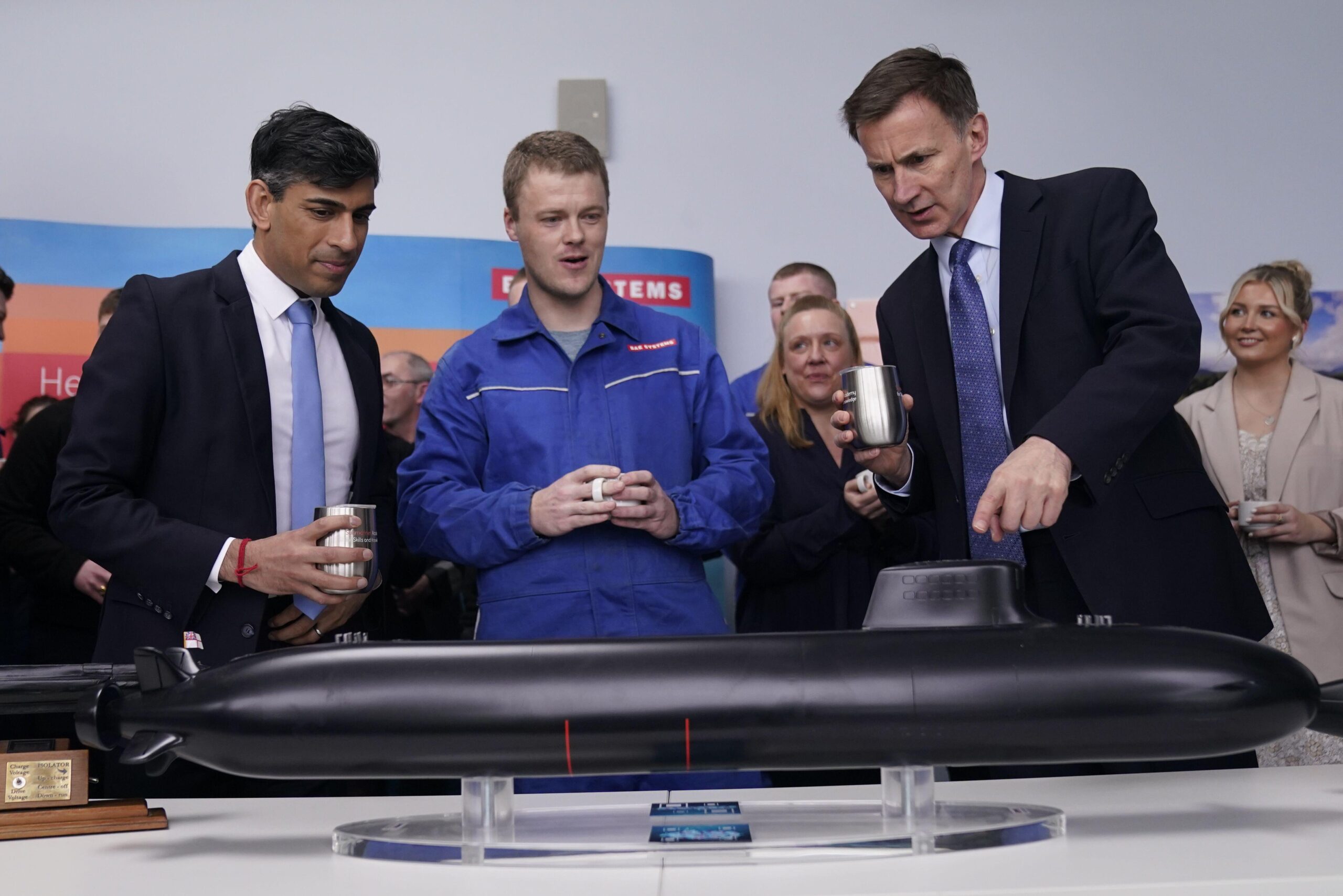In March the government announced that BAE Systems will partner with the Australian state-owned firm ASC Pty Ltd to build Australian SSN-AUKUS submarines. The submarines will be built in both Australia and the UK, and are a key goal of the AUKUS partnership, which will see the USA and UK work with Australia to provide them with SSNs: nuclear-powered, but conventionally armed, submarines.
The AUKUS plan
The AUKUS partnership was announced in September 2021, and the three countries produced an initial plan in March 2023. The plan would see US and UK SSN port visits in Australia, building up to a permanent rotating presence of one UK Astute-class and four US Virginia-class submarines in Western Australia from around 2027. This is intended to familiarise Australian sailors and shore crew with nuclear submarine operations.
When Australia is considered ‘sovereign ready’ to run its own SSN fleet, the plan envisages that the US will sell three Virginia-class SSNs to Australia in the US Fiscal Years (FY) 2032, 2035 and 2038, subject to Congressional approval. These three submarines, two of which will have already been in US service and the last of which will be newly built, are intended to supplement the Australian fleet as the current Collins-class diesel electric submarines go out of service. The plan predicts the first UK SSN-AUKUS submarine will be delivered in the late 2030s, and the first Australian submarines in the early 2040s. However, this timetable may be optimistic, and there is a possibility in the plan that another two Virginia-class submarines will be sold to Australia, which could mitigate the impact of any delays.
Virginia production problems
However, developments in the US may impact upon the viability of this element of the plan. Between 2011 and 2019 around two Virginia-class submarines were being produced each year. Current US Navy plans are based on a production rate of two submarines per year, but due to the number of SSNs due to leave service they still envisage the total size of the fleet will reduce from its current size of around 50 to 46 in Fiscal Year 2030, before rising to a target number of between 60 and 69 in Fiscal Year 2053. This reduction in SSN numbers is politically controversial in the US, as some claim it will result in a weakening of ‘conventional deterrence’ against China.
However, following the introduction of an additional module into the design which allows the submarines to carry more Tomahawk missiles, production of Virginia submarines slowed after 2019, and is currently closer to 1.2 submarines per year. A report by the US Congressional Research Service (CRS) in February estimated that the sale of Virginia-class submarines under the AUKUS plan would reduce the US SSN fleet between FY 2032 and FY 2043 (or FY 2049 if the option for Australia to buy a further two submarines is enacted). This estimate uses current US Navy assumptions that production will return from the current rate to two submarines per year by 2028, and rise to 2.3 submarines per year some time after that. Failing to achieve these milestones could increase opposition in Congress to some, or all, of the AUKUS Virginia-class sales.
SSN-AUKUS production
Previous analysis by NIS highlighted the risk to the UK submarine industrial base from its reliance on a single ‘customer’ in the MOD, as well as the role that the AUKUS partnership, and the SSN-AUKUS plan in particular, is intended to play in providing additional financial support and stability. The role of Rolls-Royce in producing reactors for both UK and Australian submarines appears to have been an integral part of the plan from an early stage, and was confirmed in March 2023. The latest announcement confirms that BAE Systems, which will produce the UK SSN-AUKUS submarines in Barrow-in-Furness, will also play a major role in manufacturing the Australian submarines, and will therefore gain additional financial support through the AUKUS partnership.
BAE’s partner, ASC Pty Ltd, is wholly owned by the Australian Government. The company was formerly known as the Australian Submarine Corporation, but now also produces surface ships for the Australian Navy. ASC built the current Collins submarine fleet, and would also have built the French-Australian Attack-class submarines that were cancelled when AUKUS was announced. ASC has a workforce of over 2,000 and reported revenues of A$767.8m in its most recent annual report.
Alongside the announcement of BAE’s role, it was also revealed that Australia would provide A$4.6bn to the UK over 10 years to be invested in the submarine industrial base. This investment had been previously announced, and is part of the rationale for Rolls-Royce expansion plans, but the exact figure was only agreed in the last few months. This funding is supposed to help “clear bottlenecks” with reactor production at Rolls-Royce, which is currently posing risks to the timetable for Dreadnought submarine production, but some will apparently also go to Sheffield Forgemasters, the specialist steel manufacturer that was nationalised in 2021. In October 2023 the UK government announced the signing of £4bn of contracts with BAE, Rolls-Royce and Babcock for the ‘Detailed Design and Long Leads’ phase of the SSN-AUKUS programme. According to the CRS, the Australian government is expected to also contribute $3bn to the US submarine industrial base and spend another $3bn developing its own industrial base.
The Australian SSN-AUKUS submarines will be built at ASC’s shipyard in Osborne, a suburb of Adelaide on the LeFevre Peninsula in South Australia. BAE already have a presence at the site through their work on Hunter-class Frigates. This was the location where the Collins-class submarines were built, but substantial changes will be made to the site, which were not yet decided at the time of the March 2023 plan. The plan also declared an intention to find other opportunities for Australian companies to participate in the SSN supply chain, citing “pressure hull steel, valves, pumps, batteries, switchboards, lighting and additive manufacturing” as potential areas.
